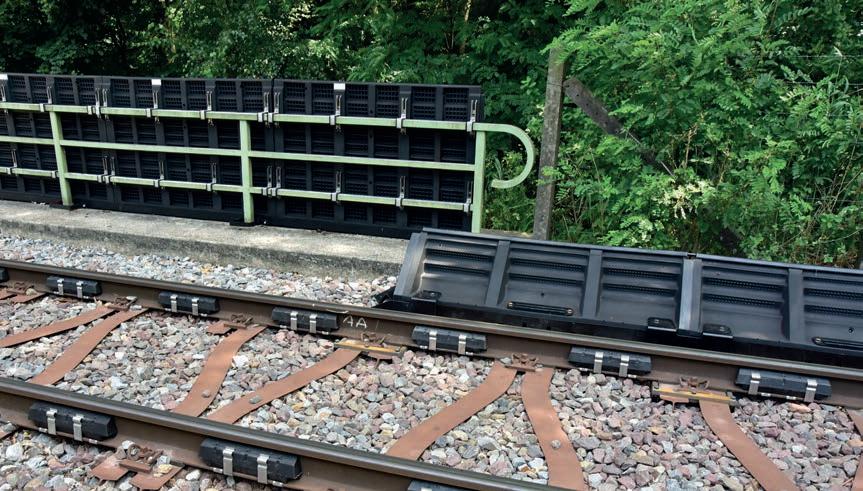
2 minute read
WA railways celebrate a century of women
Transport Minister Rita Saffioti recently joined a host of female staff from the Public Transport Authority (PTA) to mark 100 years since the first women were employed on the Western Australian Government Railways (WAGR).
The first six women – Ida Kemshall, Madeleine Cole, Dolly Grey, Lil Gordon, Enid Piercy, and May McDonald – clocked on at the railway in 1922, becoming the first cohort of women to be employed following the abandonment of WAGR’s men-only policy.
Little is known about the work lives of that original group, but – according to an article in a 1957 issue of the Railway Institute Magazine – the women formed a close friendship, organising and enjoying monthly luncheons that would also be attended by the women who joined WAGR after them.
The group paved the way for others to follow in their footsteps throughout the ensuing century. More recently:
• In June 2022 there were 633 women employed by the PTA – an increase of 50 per cent since June 2017
• Of those 633 female employees, 179 (28.3 per cent) have been at the PTA for more than 10 years, 106 (16.7 per cent) for 5-10 years, and 228 (26 per cent) for 1-5 years
• Operational roles filled by female employees include railcar drivers, driver-trainers, depot masters, network controllers, control monitoring room operators, transit officers, shift commanders, customer service staff, station coordinators, signal technicians, as well as a big cohort of office-based staff.
The PTA is also playing a key role in a National Transport Commission campaign to recruit more people – including women – into the rail industry. Three female PTA employees – a railcar driver/driver trainer, a cyber-security specialist, and a project integration manager –were interviewed as part of the campaign.
Saffioti said it was a great privilege to be able to join PTA staff celebrating this significant milestone in WA rail history.
“Things have changed a lot since 1922, and we owe a lot to trailblazers like the first six women that were employed at the WA Government Railways,” she said.
“This group of women were pioneers, breaking through societal expectations about females in the workforce to become the first women to be employed at WAGR and paving the way for the thousands that have come after them.
“Right now, we have more than 600 women employed by the PTA, which is an increase of around 50 per cent compared to 2017.
“Even with the significant changes we have seen, rail remains a male-dominated industry, but the PTA continues to work hard to recruit and retain female employees into vital operational and office-based roles.”
New STRAILastic_mSW 730
mini soundprotection wall with high absorbing surface
The new version of the STRAILastic_mSW adds a higher wall to the product range. This version is used for train speeds of up to 120 km/h.
Benefits at a glance
¬ No foundation required for installation
¬ easy and quick installation
¬ Short delivery times > noise hot spots can be supplied with products quickly
¬ Closer to the noise source than any other sound protection
¬ Break-proof due to bre-reinforced rubber compound with a cover layer of virgin rubber > UV and ozone resistant
¬ No material fatigue caused by vibrations or pressure and suction forces
¬ No problems with oversized loads
Due to the higher design, it gains even more e ect in the area of the wheel.
STRAILastic_mSW 730 is fastened to both rails with an insulated, decoupled substructure or directly in the subsoil using ground screws.
STRAILastic_mSW 730 > mini goes maxi.
1. STRAILastic_mSW 730 new version of the mini sound protection wall
2. STRAILastic_IP the infill panel
3. STRAILastic_mSW the established mini sound protection wall
4. STRAILastic_A inox 2.0 rail dampers
Sept 2023
Melbourne’s leading construction and major infrastructure event insideconstructionexpo.com.au
EXHIBITION SPACE NOW ON SALE










